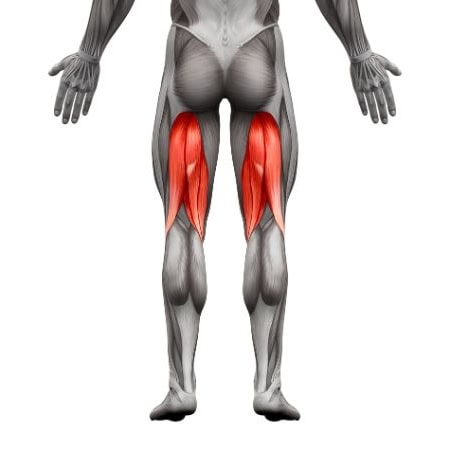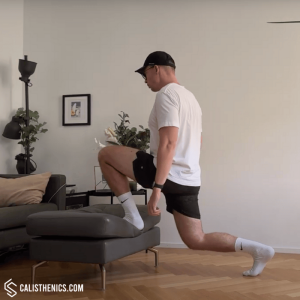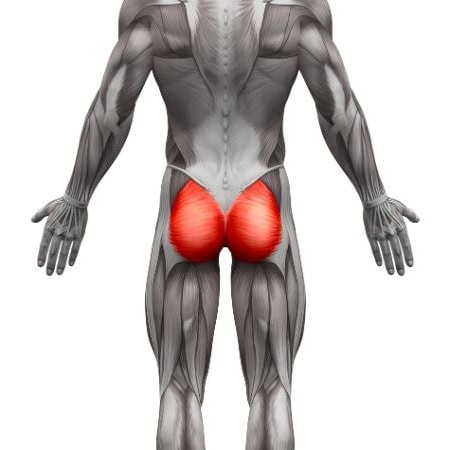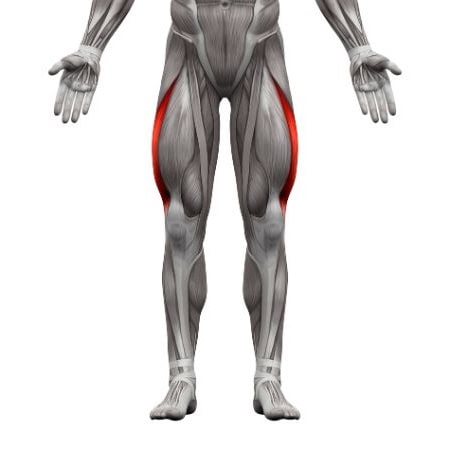Elevated Lunges
How to do Elevated Lunges?
Elevated lunges are a modified version of the traditional lunge, where one foot is placed on an elevated surface, such as a step or platform, to reduce the range of motion and make the exercise easier. This variation is ideal for beginners, individuals recovering from injury, or those working on building strength and balance gradually. By reducing the depth of the lunge, elevated lunges help improve lower-body strength, balance, and mobility in a controlled manner.
Steps to Perform a Proper Elevated Lunge:
1. Set Up an Elevated Surface:
• Stand in front of a low step, box, or platform that is sturdy and secure. Place your front foot on the elevated surface while keeping your back foot firmly on the ground behind you.
• Position your feet hip-width apart for balance and alignment.
2. Engage Your Core and Prepare for the Lunge:
• Engage your core to maintain balance, keeping your chest up and your shoulders back. Ensure your hips are square and aligned.
• The front knee should be directly above your ankle, and the back leg extended with a slight bend in the knee.
3. Lower Your Body:
• Inhale as you slowly lower your hips by bending your back knee toward the ground. Keep your weight on your front heel and maintain a straight posture.
• Lower your body until your back knee is just above the floor or as low as your range of motion allows while maintaining control. Your front thigh should remain parallel to the floor or slightly higher.
4. Push Back Up:
• Exhale as you press through your front heel to return to the starting position, straightening both legs while keeping your core engaged.
• Focus on using your glutes and quads to lift your body back up.
5. Repeat and Switch Sides:
• Perform the desired number of repetitions on one leg, then switch to the other leg and repeat the movement to ensure balanced strength on both sides.
Benefits of Elevated Lunges
• Strengthens the Lower Body: Elevated lunges primarily target the quadriceps, glutes, and hamstrings, helping to build strength and endurance in the legs and hips.
• Improves Balance and Stability: The elevated position requires greater balance and control, engaging the stabilizing muscles of the legs and core.
• Enhances Knee and Hip Mobility: By reducing the range of motion, elevated lunges allow for a controlled stretch of the hip flexors and gentle knee flexion, improving joint mobility over time.
• Gentle on the Joints: The reduced depth of the lunge decreases the stress on the knees and hips, making this variation ideal for individuals with joint pain or limited mobility.
• Functional Strength Development: Lunges mimic real-life movements like stepping and squatting, helping to improve functional strength and movement efficiency in daily activities.
• Progression to Full Lunges: Elevated lunges are a stepping stone to full lunges, allowing beginners to build strength, balance, and confidence before progressing to more advanced lunge variations.
• Versatile and Accessible: No special equipment is required beyond a step or platform, making elevated lunges a versatile option for home or gym workouts.
Common Mistakes to Avoid
• Letting the Front Knee Track Over the Toes: Ensure that your front knee stays aligned with your ankle, avoiding excessive forward movement that could strain the knee joint.
• Leaning Forward: Keep your chest lifted and back straight throughout the movement. Avoid leaning forward, which can shift the focus away from your glutes and quads.
• Rushing the Movement: Perform the movement slowly and with control. Rushing through the exercise can compromise form and increase the risk of injury.
• Ignoring Balance: If you feel unstable, reduce the height of the step or use a support until you build more strength and balance.
Tips for the proper execution of Elevated Lunges
Core Engagement: Keep your core muscles tight throughout the movement to help maintain balance and proper posture.
Knee Alignment: Ensure that your front knee stays directly above your ankle as you lunge. Avoid letting your knee track too far forward past your toes to reduce strain on your knee joint.
Control the Descent: Lower yourself slowly and with control, focusing on maintaining balance and engaging the muscles of your front leg.
Breathing: Inhale as you lower your body and exhale as you push back up. Controlled breathing helps stabilize your core and maintain focus.
Muscles worked when doing Elevated Lunges
Primary Muscles:
•Quadriceps: The front of the thigh, especially in the front leg, is heavily engaged during the lowering and pushing phases.
•Glutes: Gluteus maximus and medius, activated as you push through your front heel to rise from the lunge.
•Hamstrings: Engage to assist in the controlled descent and help stabilize the movement.
Secondary Muscles:
•Core: Abdominal muscles help stabilize the torso and maintain balance.
•Calves: Gastrocnemius and soleus are engaged for stability, especially in the back leg.
•Lower Back: Erector spinae muscles support posture and alignment.
•Hip Flexors: Engage to help stabilize and control the motion, particularly in the back leg.
Primary Muscle(s):
Secondary Muscle(s):

Hamstring
Adjust the difficulty of Elevated Lunges
How to make Elevated Lunges harder?
How to make Elevated Lunges easier?
How to make Elevated Lunges harder?
To make Elevated Lunges harder:
-
Decrease the Height of the Surface: Lower the step or platform to bring the lunge closer to the floor, increasing the range of motion and making the movement more challenging
-
Add Weight: Hold dumbbells or place a barbell on your shoulders to add resistance and increase the intensity of the lunge.
-
Increase Repetitions or Sets: Perform more repetitions or sets to challenge your endurance and strengthen your lower body further.
-
Add a Pulse: While in the lowered lunge position, perform small pulses (up and down movements) before returning to the starting position to increase time under tension and engage the leg muscles more deeply.
How to make Elevated Lunges easier?
To make Elevated Lunges easier:
-
Increase the Height of the Surface: Use a higher step or platform to reduce the range of motion, allowing you to perform the movement with less depth.
-
Shorten the Range of Motion: Lower your body only halfway down instead of going into a full lunge. Gradually increase your range of motion as you gain strength and confidence.
-
Hold onto a Support: Use a wall or sturdy object for support to help maintain balance as you lower and lift your body.





